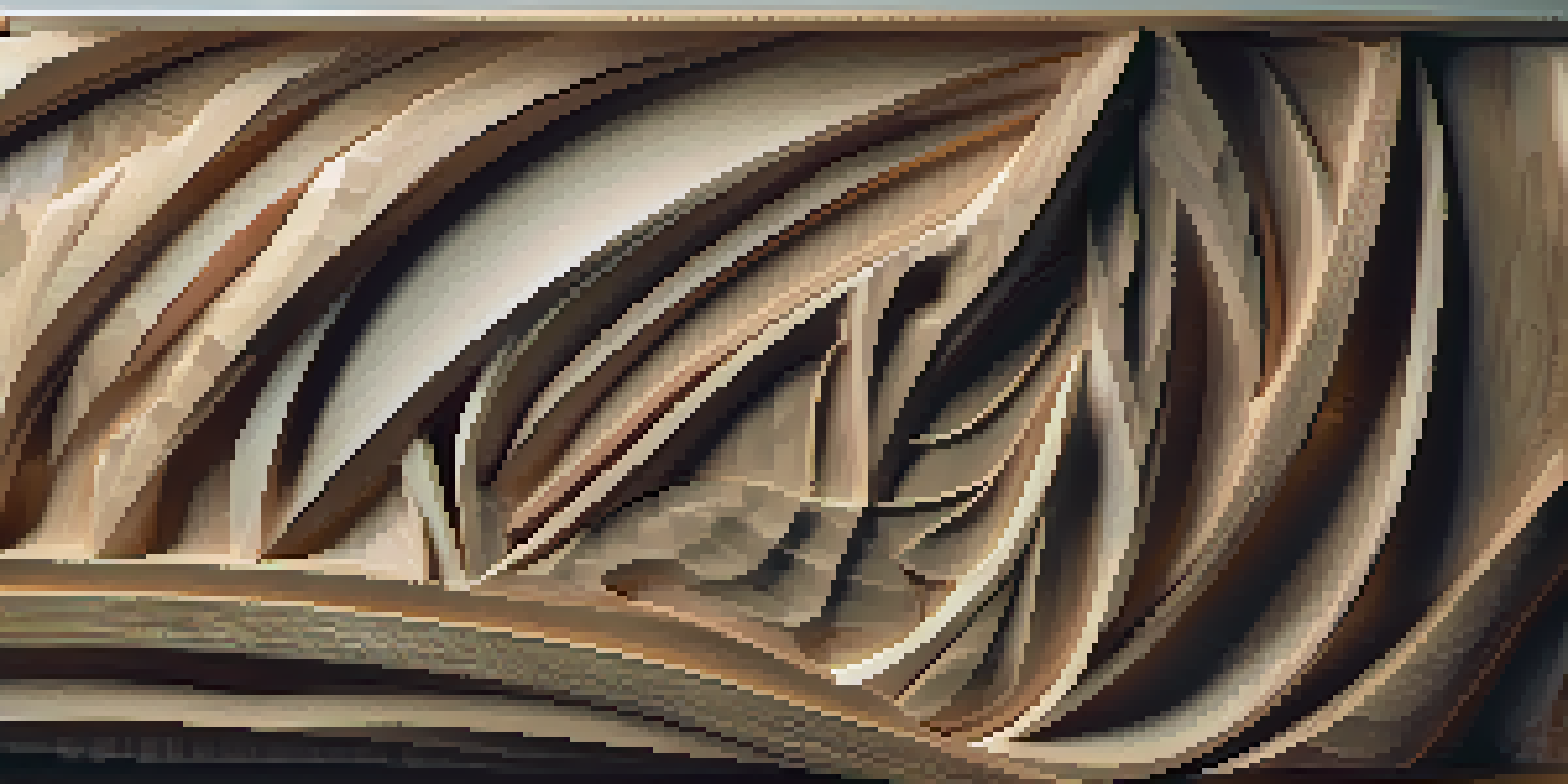Carving Techniques for Abstract Sculptures: A Unique Approach

Understanding the Essence of Abstract Sculpture
Abstract sculpture is about expressing emotions through form and space, often deviating from traditional representation. Unlike realistic sculptures, abstract pieces invite viewers to interpret meaning based on their perceptions, making each experience unique. This freedom of interpretation allows artists to explore deeper themes and ideas without the constraints of realism.
Essential Tools for Abstract Carving
To embark on your abstract sculpture journey, you'll need a few essential tools. Common tools include chisels, mallets, and rasps, which help you shape and refine your material. Each tool serves a distinct purpose, allowing you to create varied textures and depths in your work, enhancing the overall aesthetic of your sculpture.
Abstract Sculpture Invites Interpretation
Unlike traditional sculptures, abstract pieces allow viewers to derive personal meaning from their forms and spaces.
Choosing Your Material: Wood vs. Stone
The choice of material can significantly impact your carving process and final piece. Wood is often more forgiving, allowing for easier adjustments, while stone demands precision and patience. Consider your comfort level and desired outcome when selecting your material; each has its unique beauty and challenges.
Basic Carving Techniques to Get Started
Begin with basic carving techniques like roughing out, refining, and detailing. Roughing out involves removing large sections of material to form the general shape, while refining allows you to add more intricate details. As you gain confidence, you can experiment with layering techniques to create depth and dimension in your abstract pieces.
Material Choice Affects Carving
Selecting between wood and stone impacts both the carving process and the final aesthetic of the sculpture.
Incorporating Negative Space in Your Design
Negative space is a powerful element in abstract sculpture, as it plays a crucial role in the overall composition. By thoughtfully considering the areas around and between your forms, you can enhance the visual impact of your work. This technique encourages viewers to engage with the sculpture from multiple angles, inviting them to explore the interplay of shapes and spaces.
Experimenting with Textures and Patterns
Textures and patterns add a tactile dimension to your sculptures, making them more engaging. Consider using tools like wire brushes or sandpaper to create varied textures that can evoke different feelings. Experimenting with these elements not only elevates your work but also adds an inviting quality that encourages viewer interaction.
Textures Enhance Viewer Engagement
Incorporating varied textures and patterns in your sculpture creates a tactile experience that draws viewers in.
The Role of Color in Abstract Sculpture
Color can profoundly impact the perception of your abstract sculpture, evoking emotions and setting the mood. Whether you choose to paint, stain, or leave your material in its natural state, consider how color interacts with form. A bold color choice can draw attention, while subtle hues might invite contemplation, enhancing the overall experience for the viewer.
Showcasing Your Abstract Sculpture
Once your sculpture is complete, consider how to best showcase it for maximum impact. The right lighting and placement can transform the way viewers perceive your work, highlighting key features and textures. Think of your sculpture as part of a larger narrative, and create an environment that complements its unique story.